Mansi Goel
Deep Learning Based Named Entity Recognition Models for Recipes
Feb 27, 2024Abstract:Food touches our lives through various endeavors, including flavor, nourishment, health, and sustainability. Recipes are cultural capsules transmitted across generations via unstructured text. Automated protocols for recognizing named entities, the building blocks of recipe text, are of immense value for various applications ranging from information extraction to novel recipe generation. Named entity recognition is a technique for extracting information from unstructured or semi-structured data with known labels. Starting with manually-annotated data of 6,611 ingredient phrases, we created an augmented dataset of 26,445 phrases cumulatively. Simultaneously, we systematically cleaned and analyzed ingredient phrases from RecipeDB, the gold-standard recipe data repository, and annotated them using the Stanford NER. Based on the analysis, we sampled a subset of 88,526 phrases using a clustering-based approach while preserving the diversity to create the machine-annotated dataset. A thorough investigation of NER approaches on these three datasets involving statistical, fine-tuning of deep learning-based language models and few-shot prompting on large language models (LLMs) provides deep insights. We conclude that few-shot prompting on LLMs has abysmal performance, whereas the fine-tuned spaCy-transformer emerges as the best model with macro-F1 scores of 95.9%, 96.04%, and 95.71% for the manually-annotated, augmented, and machine-annotated datasets, respectively.
Dish detection in food platters: A framework for automated diet logging and nutrition management
May 12, 2023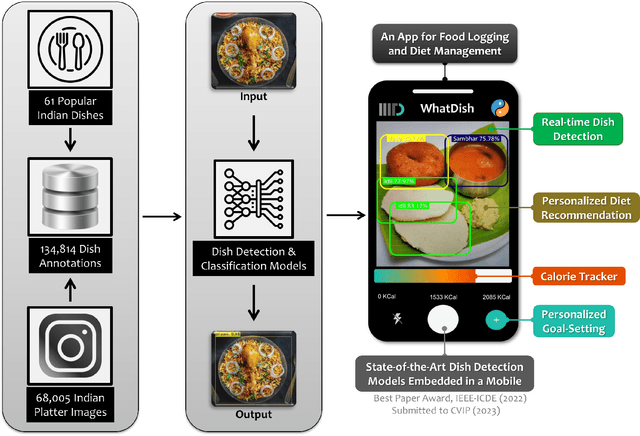

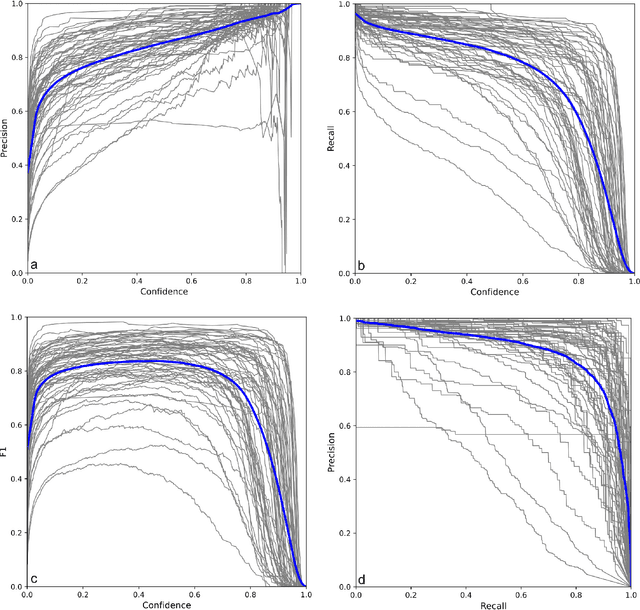
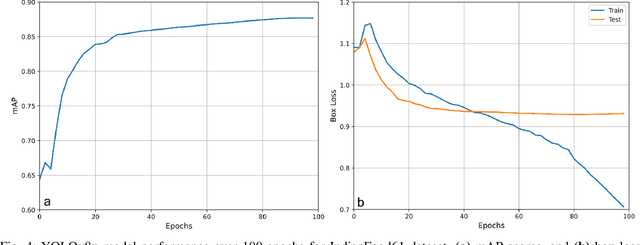
Abstract:Diet is central to the epidemic of lifestyle disorders. Accurate and effortless diet logging is one of the significant bottlenecks for effective diet management and calorie restriction. Dish detection from food platters is a challenging problem due to a visually complex food layout. We present an end-to-end computational framework for diet management, from data compilation, annotation, and state-of-the-art model identification to its mobile app implementation. As a case study, we implement the framework in the context of Indian food platters known for their complex presentation that poses a challenge for the automated detection of dishes. Starting with the 61 most popular Indian dishes, we identify the state-of-the-art model through a comparative analysis of deep-learning-based object detection architectures. Rooted in a meticulous compilation of 68,005 platter images with 134,814 manual dish annotations, we first compare ten architectures for multi-label classification to identify ResNet152 (mAP=84.51%) as the best model. YOLOv8x (mAP=87.70%) emerged as the best model architecture for dish detection among the eight deep-learning models implemented after a thorough performance evaluation. By comparing with the state-of-the-art model for the IndianFood10 dataset, we demonstrate the superior object detection performance of YOLOv8x for this subset and establish Resnet152 as the best architecture for multi-label classification. The models thus trained on richly annotated data can be extended to include dishes from across global cuisines. The proposed framework is demonstrated through a proof-of-concept mobile application with diverse applications for diet logging, food recommendation systems, nutritional interventions, and mitigation of lifestyle disorders.
Object Detection in Indian Food Platters using Transfer Learning with YOLOv4
May 10, 2022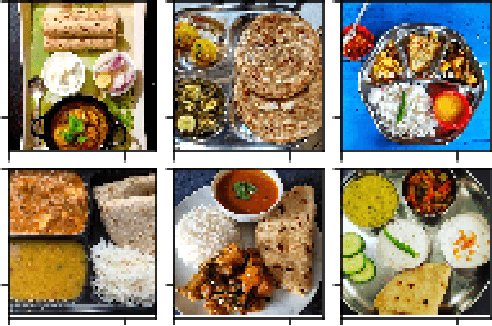
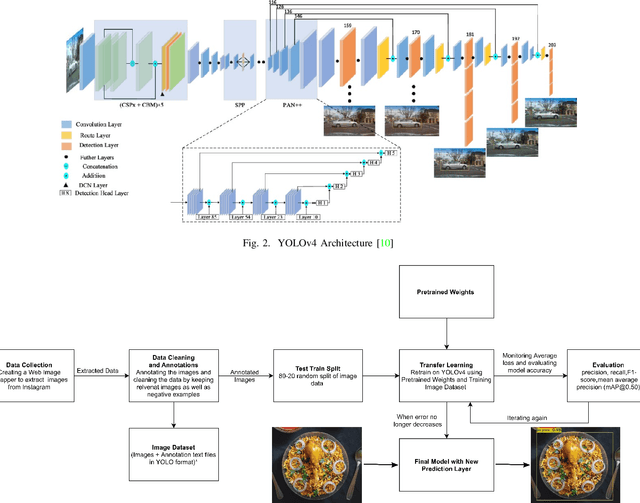
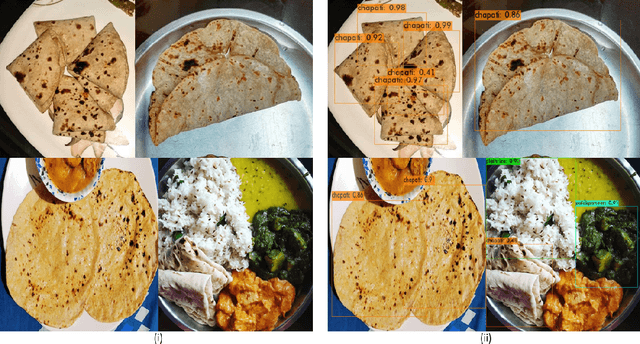
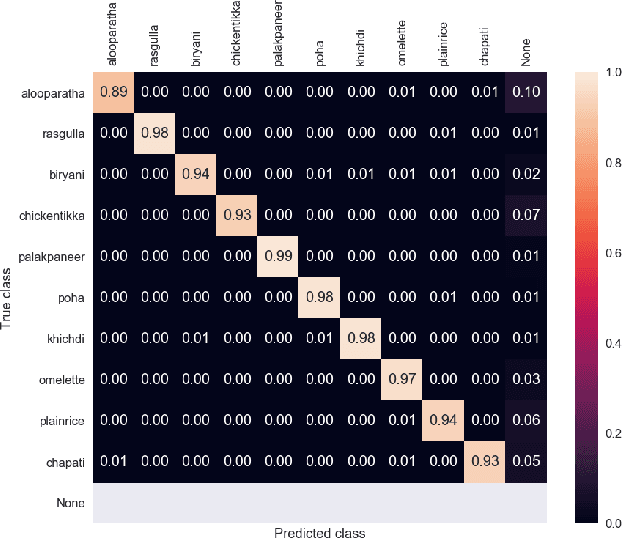
Abstract:Object detection is a well-known problem in computer vision. Despite this, its usage and pervasiveness in the traditional Indian food dishes has been limited. Particularly, recognizing Indian food dishes present in a single photo is challenging due to three reasons: 1. Lack of annotated Indian food datasets 2. Non-distinct boundaries between the dishes 3. High intra-class variation. We solve these issues by providing a comprehensively labelled Indian food dataset- IndianFood10, which contains 10 food classes that appear frequently in a staple Indian meal and using transfer learning with YOLOv4 object detector model. Our model is able to achieve an overall mAP score of 91.8% and f1-score of 0.90 for our 10 class dataset. We also provide an extension of our 10 class dataset- IndianFood20, which contains 10 more traditional Indian food classes.
 Add to Chrome
Add to Chrome Add to Firefox
Add to Firefox Add to Edge
Add to Edge